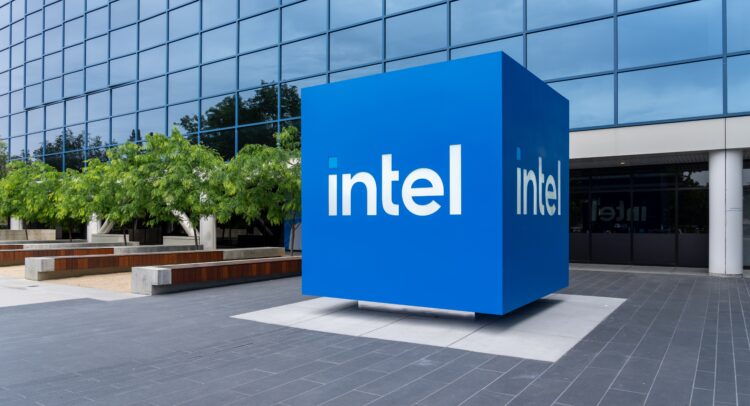
Intel Corporation (NASDAQ:INTC) is predicted to report a loss of $448.05 million this quarter, highlighting the challenges it faces amidst increased R&D expenses.
The company’s valuation ratios, including a P/E ratio of 31.43, P/S ratio of 2.32, and EV/Sales ratio of 3.15, indicate investor confidence in its long-term potential despite current losses.
Intel’s financial stability is underscored by a debt-to-equity ratio of 0.49 and a current ratio of 1.57, demonstrating its capability to navigate through market volatility and short-term obligations.
Intel Corporation (NASDAQ:INTC), a leading player in the semiconductor industry, is on the brink of revealing its second-quarter earnings. This moment is crucial as it provides insights into the company’s financial health and strategic direction, especially in areas like artificial intelligence (AI), where demand is surging. Intel’s journey from a profitable quarter last year to a predicted loss of $448.05 million this quarter underscores the challenges it faces, including increased research and development expenses. This shift towards a loss, from a profit in the same period last year, with revenue slightly dipping to $12.94 billion, sets a somber backdrop for the earnings announcement.
The company’s financial metrics, such as the price-to-earnings (P/E) ratio of approximately 31.43, price-to-sales (P/S) ratio of about 2.32, and an enterprise value to sales (EV/Sales) ratio of roughly 3.15, reflect investor valuation of Intel’s earnings and sales. These figures, coupled with an enterprise value to operating cash flow (EV/OCF) ratio of approximately 14.44, highlight how the market values Intel’s ability to generate cash from its operations. Despite the anticipated loss, these ratios suggest that investors still see value in Intel’s long-term potential.
Intel’s financial leverage, as indicated by a debt-to-equity (D/E) ratio of around 0.49, shows a balanced approach to financing its assets, neither too reliant on debt nor overly conservative. This financial stability is crucial as Intel navigates through its current challenges, including the reported widening loss and slight revenue decline. Moreover, a current ratio of approximately 1.57 demonstrates Intel’s capability to meet its short-term obligations, an essential aspect of financial health, especially in a volatile market.
The backdrop of Intel’s financial performance is further complicated by its stock’s nearly 40% decline in value this year, with shares priced at $30.13 as of the latest closing. This decline reflects the market’s reaction to Intel’s challenges, including competition, rising costs, and delays in its foundry business. However, the company’s valuation ratios, such as the P/E and P/S, suggest that investors are still willing to pay for Intel’s earnings and sales, albeit cautiously.
Investors and analysts are closely watching Intel’s revenue outlook and its ability to leverage AI and data center growth, amidst the reported challenges. The anticipation of a slight revenue increase in the third quarter to $14.34 billion hints at potential recovery, driven by seasonal industry trends and government initiatives to support the U.S. semiconductor industry. Intel’s journey ahead, marked by efforts to overcome its current hurdles while capitalizing on growth opportunities, will be pivotal in shaping its financial trajectory and market valuation.

